Multi-messenger Gravitational Lensing
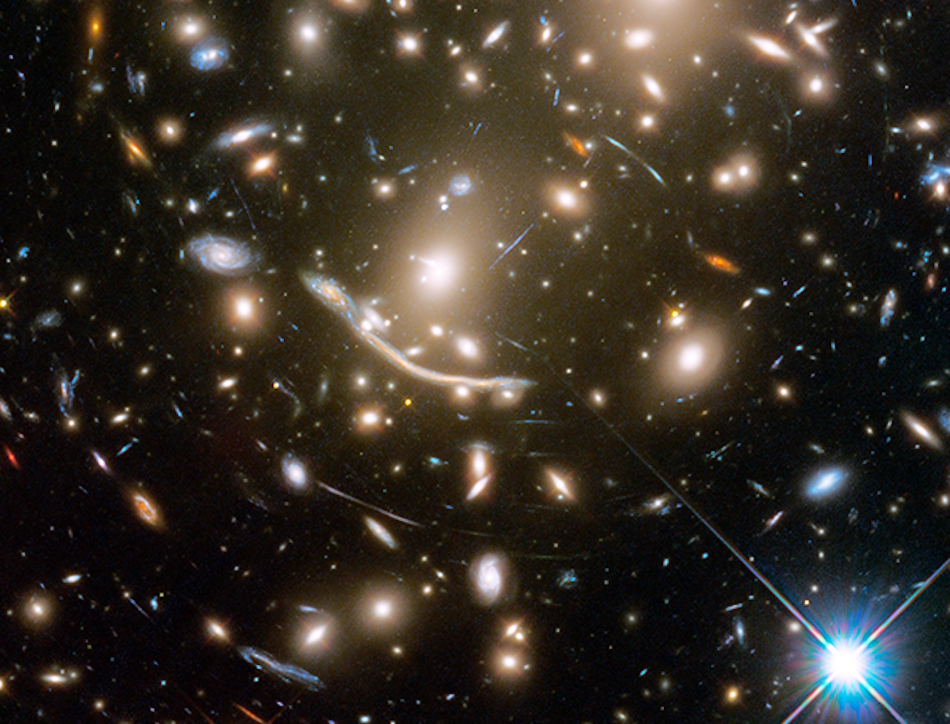
Theo Murphy meeting organised by Dr Federica Bianco, Professor Martin Hendry, and Professor Graham Smith.
The first multi-messenger (electromagnetic radiation and gravitational waves) detection of a gravitationally lensed cosmic explosion will have huge impact and unleash decades of novel science. This meeting brought together experts from the relevant disciplines to review recent progress and chart the path to first detection, as the Vera Rubin Observatory nears first-light, and gravitational wave detector sensitivity continues to improve.
Meeting papers will be published in a future issue of Philosophical Transactions of the Royal Society A.
Programme
To view the programme and speakers' biographies, please scroll down and select the relevant day, then click the arrows to view the speakers and talks.
Attending this event
The meeting has taken place.
Enquiries: contact the Scientific Programmes team.
Organisers
Schedule
Chair
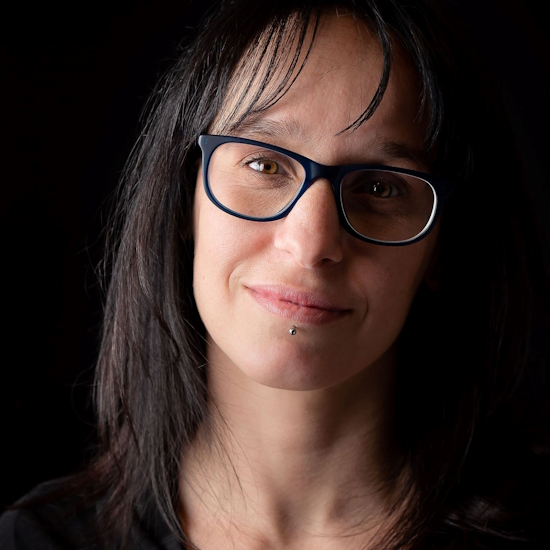
Dr Federica Bianco, University of Delaware, USA

Dr Federica Bianco, University of Delaware, USA
Federica Bianco is an Associate Professor at the University of Delaware in the Departments of Physics and Astronomy and in the Biden School of Public Policy and Administration and a Resident Faculty in the University of Delaware Data Science Institute. She is Rubin Observatory Construction's Deputy Project Scientist and the chair of the Rubin LSST Transients and Variable Stars Science Collaboration. She works on data-driven solutions to problems that span from the nature of explosions in the sky to urban sustainability. She studies lightcurves, time series of light, in astronomy to understand stellar evolution and cosmology, and in the urban environment at the Urban Observatory, where the study of urban lightcurves enables sociological, ecologic, and economic inference. She is a TED 2019 fellow.
| 09:00-09:05 |
Welcome by the Royal Society and lead organiser
|
|---|---|
| 09:05-09:30 |
Introduction and overview of multi-messenger gravitational lensing
Multi-messenger gravitational lensing combines multiple messengers from explosive transients in distant gravitationally lensed galaxies. The available messengers include optical/infrared photons, gamma- and X-rays, radio waves, gravitational waves, and potentially neutrinos. Combining some or all of these messengers has huge potential to enrich scientific progress beyond mono-messenger discoveries, and can enable dramatic gains in angular resolution and thus confidence in candidate detections. As such, multi-messenger gravitational lensing draws significant inspiration from the breakthrough discoveries of GRB170817A/GW170817/AT2017gfo, Supernova Refsdal, and iPTF16geu. Professor Smith will review the origins and recent progress of multi-messenger gravitational lensing, and outline some of the upcoming opportunities and challenges. 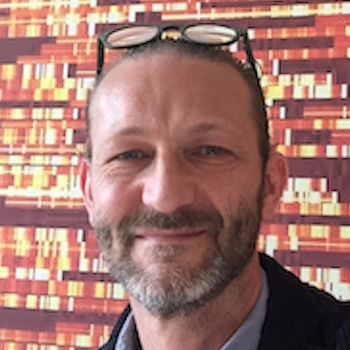
Professor Graham Smith, University of Birmingham, UK

Professor Graham Smith, University of Birmingham, UKGraham Smith is Professor of Physics and Astronomy in the University of Birmingham's School of Physics and Astronomy. He led the first peer reviewed article on the gravitational lensing interpretation of LIGO's gravitational wave detections in 2018. He also led the study that demonstrates the feasibility of multi-messenger gravitational lensing in the mid-2020s. He is a founding member of the LSST:UK consortium through which UK scientists participate in the Rubin/LSST science collaborations, co-chairs Rubin/LSST's Strong Lensing Science Collaboration (SLSC), and leads the LSST:UK and SLSC contributions to Rubin commissioning. |
| 09:30-10:00 |
Fundamental physics with multi-messenger gravitational lensing
The birth of GW astronomy has provided a wealth of new opportunities to test fundamental physics. One focus area has been testing for deviations from General Relativity on cosmological scales, which can leave signatures in the propagation behaviour of GWs. Professor Baker will start the talk by reviewing the effects of beyond-Einstein gravity on GWs, and the constraints obtained on these from GW observations to date. It will be seen that a strongly-lensed multi-messenger system possesses the potential to overcome some of the primary challenges currently encountered in these measurements. Professor Baker will describe some of the key scientific analyses that should be ready to be performed when such a detection is in hand, and how they probe the existence of new fundamental fields beyond the LCDM paradigm.
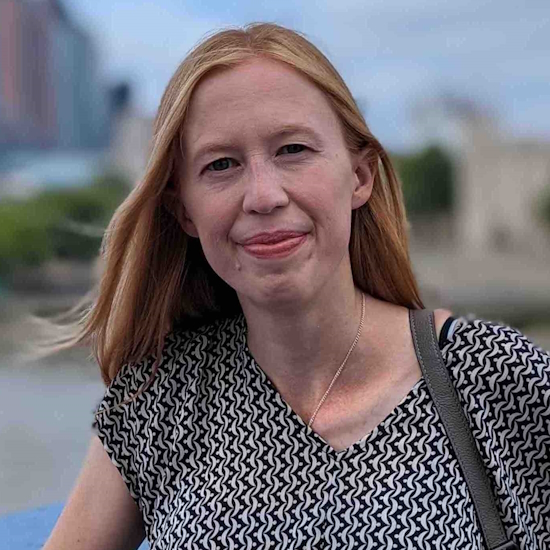
Professor Tessa Baker, University of Portsmouth, UK

Professor Tessa Baker, University of Portsmouth, UKTessa Baker is a cosmologist and gravitational wave astronomer. Her research centres on testing the laws of gravity that govern the universe on the very largest scales. She is interested in both new theoretical ideas about dark energy, and testing them with the latest electromagnetic and gravitational wave observations. Tessa completed her training at Oxford, before moving to Queen Mary University of London (via a brief stop in Philadelphia) for a Royal Society University Research Fellowship. In 2023 she moved to join the ICG at Portsmouth. She is strongly involved in the LIGO-Virgo-KAGRA collaboration, the LISA consortium and the Vera Rubin Observatory, leading various groups focusing on tests of fundamental physics. When not working, she still likes to test gravity by hiking up large things. |
| 10:00-10:30 |
Time-delay cosmography: the present and the future
The arrival time delays of multiply imaged strong gravitationally lensed sources provide a one-step cosmological distance measurement. The methodology, known as time-delay cosmography, rose to prominence to provide precise measurements of the Hubble constant, independent of the local distance ladder and the cosmic microwave background. In this overview talk, Simon Birrer will introduce the methodology and key ingredients, as well as possible systematics. The author will then highlight the progress made in the last decade, present the recent results obtained, and present an outlook in the near future - which may well contain lensed gravitational waves. 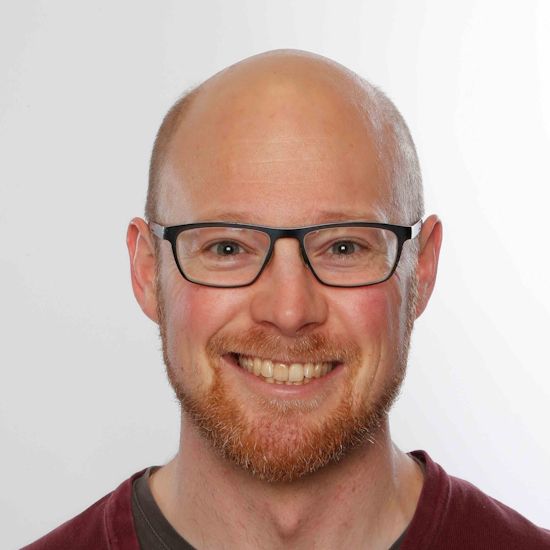
Assistant Professor Simon Birrer, Stony Brook University, USA

Assistant Professor Simon Birrer, Stony Brook University, USASimon Birrer is an Assistant Professor at Stony Brook, New York. Prior, he was a Kavli Postdoctoral Fellow at Stanford University (2019-2022) and a Postdoctoral Scholar at the University of California, Los Angeles. Birrer received his PhD from ETH Zurich in 2016. Birrer is primary using gravitational lensing, a phenomena described by general relativity. Birrer’s group is actively developing open-source advanced computational and statistical tools to extract detailed and robust information from strong lensing about the nature of dark matter and dark energy. |
| 10:30-11:00 |
Break
|
| 11:00-11:30 |
Probing kilonova physics with multi-messenger gravitational lensing
The detection of the kilonova AT2017gfo has provided us with a wealth of observations. However, to interpret these observations to obtain information about the underlying merger ejecta, as well as to understand kilonova diversity, we are reliant on kilonova modelling. The majority of binary neutron star ejecta models considered when simulating kilonovae have been in 1D, or even idealised toy models, which have neglected the complexities related to hydrodynamics modelling. Dr Collins will show that 3D kilonova radiative transfer simulations are critical, due to the asymmetric nature of these events, and will present results on the first 3D simulation from hydrodynamical merger ejecta using line-by-line opacities from millions of r-process transitions. Dr Collins will also highlight the necessity of accurate atomic data of r-process elements, for which experimentally obtained data is highly incomplete. This talk will aim to give an overview of kilonovae from a modelling perspective to prompt discussion on how multi-messenger gravitational lensing can be informed by simulations, and how it can provide constraints for theoretical models.

Dr Christine Collins, GSI Helmholtz Centre for Heavy Ion Research, Germany

Dr Christine Collins, GSI Helmholtz Centre for Heavy Ion Research, GermanyChristine is a Postdoctoral Researcher at GSI Helmholtz centre for heavy ion research. She obtained her PhD from Queen’s University Belfast in 2021, supervised by Dr Stuart Sim. Her research focuses on radiative transfer simulations of Type Ia supernovae and kilonovae. Her recent work has combined detailed radiative transfer modelling with realistic hydrodynamical neutron star merger simulations to predict kilonova light curves and spectra. |
| 11:30-12:00 |
Lessons from multi-messenger astronomy and GW170817
Multi-messenger astronomy promises a revolution in our ability to understand some of the most extreme physical conditions in the Universe. However, making the most of this potential requires overcoming a number of observational challenges. This talk will review the discovery of GW170817 and the optical counterpart in 2017, as well as the difficulties in finding any multi-messenger sources since. Lessons will be drawn as to how to identify a kilonova counterpart in GW follow-up searches. The author will then look at the exquisite data obtained for GW170817, and a handful of sources from GRB observations, to review what they now know about kilonova physics, and how a multi-messenger lensing approach could help address some of the biggest remaining questions. 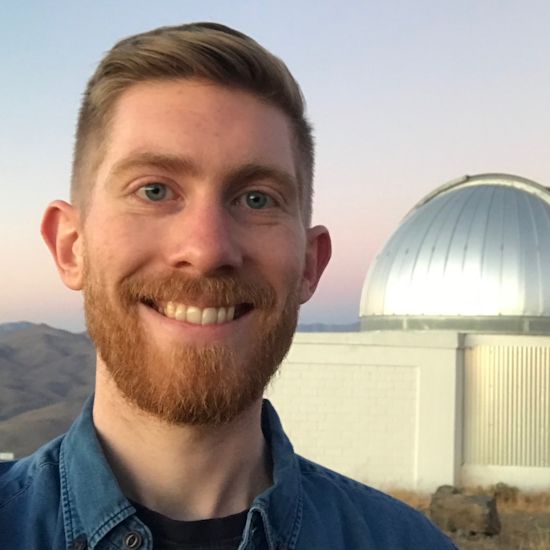
Dr Matt Nicholl, Queen’s University Belfast, UK

Dr Matt Nicholl, Queen’s University Belfast, UKMatt is a Reader in Astrophysics at Queen’s University Belfast. He obtained his PhD from QUB in 2015. He has since been a postdoctoral researcher at the Harvard-Smithsonian Centre for Astrophysics, a Royal Astronomical Society Research Fellow at the University of Edinburgh, and an assistant/associate professor at the University of Birmingham, before returning to QUB. His research interests span a wide range of energetic and explosive transients, in particular kilonovae, superluminous supernovae and tidal disruption events. He is particularly interested in what early detection and classification from all-sky surveys and modelling of large samples can reveal about the compact objects that power these extreme events. |
| 12:00-12:30 |
Discussion
|
Chair
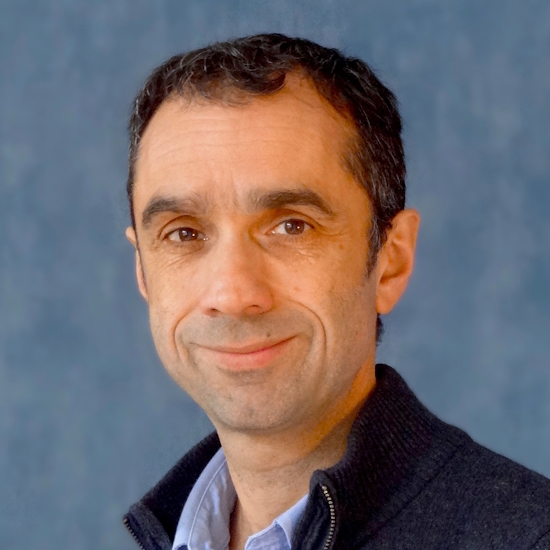
Professor Nial Tanvir, University of Leicester, UK

Professor Nial Tanvir, University of Leicester, UK
Nial Tanvir is a professor in the Department of Physics and Astronomy at the University of Leicester in the United Kingdom. His main areas of research are gamma-ray bursts (GRBs), the structure and evolution of galaxies, and the extragalactic distance scale. Dr Tanvir headed the team that discovered the infrared afterglow of GRB 090423, proving it to be the most distant object identified in the universe up to that time, and in 2013 found the first evidence for a so-called “kilonova” accompanying a short-duration gamma-ray burst. The latter breakthrough paved the way for the searches for electromagnetic radiation accompanying gravitational wave sources, which came to fruition with the discovery of the binary neutron star merger GW170817. In 2002 he was co-recipient of the European Union Descartes Prize for research, and in 2019 was awarded the Royal Astronomical Society’s Herschel Medal.
| 13:30-14:00 |
Towards the first detection: the gravitational wave perspective
When gravitational waves are gravitationally lensed by massive intervening astrophysical objects, they can leave numerous signatures on the original wave. Strong lensing by galaxies and clusters can produce multiple copies of the same waveform with arrival times hours to years apart. Millilensing by smaller-scale structures could produce similar copies but with arrival time differences so small that the copies overlap with slightly variable frequencies, producing beats in the waveform. Yet smaller-scale lensing by microlenses could produce wave optics effects that produce frequency-dependent distortions that encode information about the objects that lensed them. This talk aims to review the latest methodologies used to search for these lensing signatures using LIGO-Virgo-Kagra gravitational-wave detectors and briefly overview the current search status. 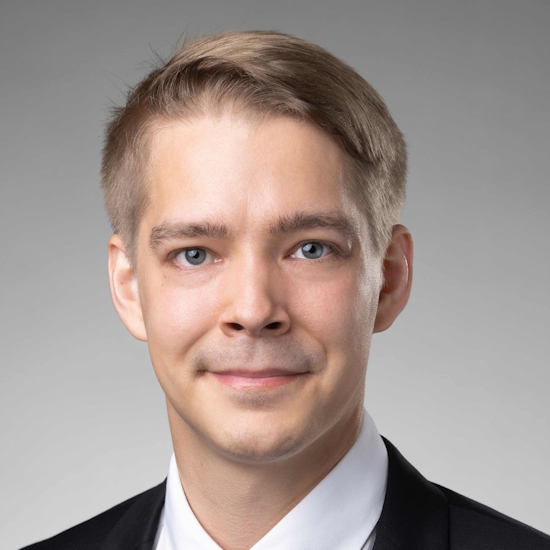
Dr Otto Akseli Hannuksela, Chinese University of Hong Kong, Hong Kong

Dr Otto Akseli Hannuksela, Chinese University of Hong Kong, Hong KongDr Hannuksela is an Assistant Professor at Chinese University of Hong Kong, Hong Kong. He specialises in gravitational waves, which are ripples in the fabric of space-time detected for the first time in 2015. As a member of the LIGO-Virgo-Kagra (LVK) collaboration, Dr Hannuksela participates in gravitational wave analysis and interpretation. He is the current co-chair of the LVK gravitational-wave lensing sub-group. |
|---|---|
| 14:00-14:30 |
Towards the first detection: the electromagnetic perspective
Making an unambiguous detection of a lensed gravitational wave is looking to be a challenging feat with current generation detectors due to large uncertainties in sky localisations and other inferred parameter distributions. However, in the case of binary neutron star (BNS) mergers this can be overcome by detecting multiple images of its lensed kilonova counterpart, simultaneously confirming the lensing nature of the event and locating it precisely - further enabling a wealth of lensed multi-messenger science. Such a strategy demands answers to two key problems: 1) How do we identify candidate lensed BNS events fast enough to ensure the lensed kilonova is still detectable? 2) What is the optimal observing strategy for following up candidate lensed events to detect lensed kilonovae? During this talk Dr Ryczanowski will discuss solutions to both of these issues, specifically: how GW detections of progenitors in the ~3 to 5 solar mass black hole "mass gap" can be considered candidate lensed BNS events and will present the strategy we are actively employing for follow-up of such events in O4 and beyond. 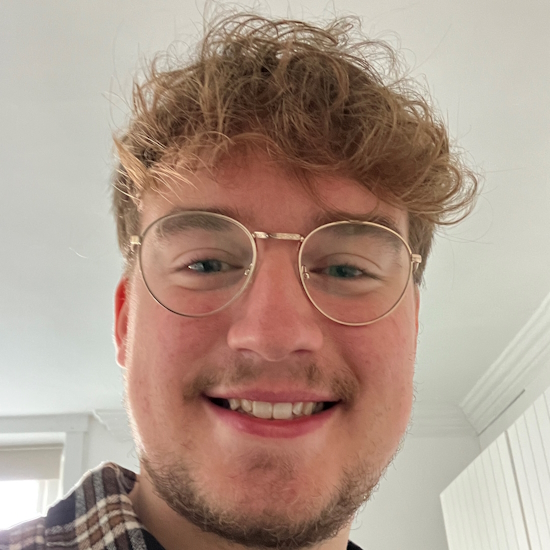
Dr Dan Ryczanowski, University of Portsmouth, UK

Dr Dan Ryczanowski, University of Portsmouth, UKDan is a Postdoctoral research fellow at the University of Portsmouth's Institute of Cosmology and Gravitation. His research interests centre around observations of strong gravitationally lensed transients, including supernovae and optical counterparts to gravitational wave events. and how observations of these phenomena can be used for inference of cosmological parameters. He completed his PhD in 2022 on this topic under the supervision of Professor Graham P Smith at the University of Birmingham. |
| 14:30-15:00 |
Towards the first detection: combining the messengers
The means to probe the Universe were, essentially, limited through the electromagnetic waves until a decade ago. With the advent of gravitational wave detectors, the scientists have tapped into a distinct mode of studying the Universe. Needless to say, this presents us with the opportunity of combining such varied observational probes to better understand several phenomena that were impossible to study otherwise. In this talk, the speaker will give a brief overview of the ideas and attempts the community is making to answer certain important scientific questions as well as improve the search methodologies followed by future directions to explore and the development of much needed resources to meet those goals. 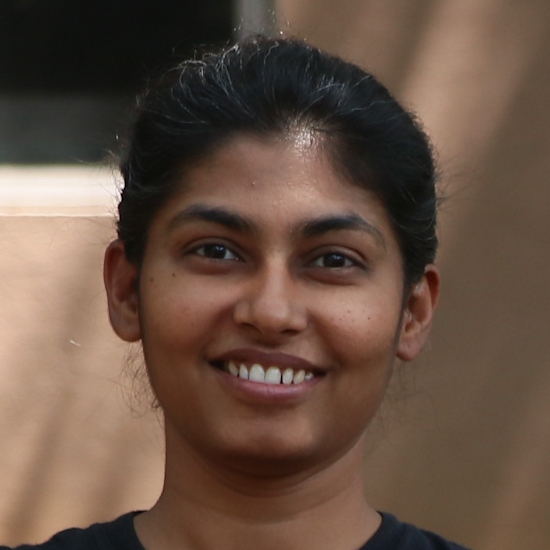
Dr Anupreeta More, Inter-University Centre for Astronomy and Astrophysics, India

Dr Anupreeta More, Inter-University Centre for Astronomy and Astrophysics, IndiaAnupreeta More is a scientist at Inter-University Centre for Astronomy and Astrophysics, Pune University, working on gravitational waves as part of the LIGO collaboration. She did her PhD at the Max Planck Institute for Radio Astronomy, Bonn. She was a postdoctoral fellow at Kavli Institute for Cosmological Physics, University of Chicago, and a JSPS fellow at Kavli Institute for the Physics and Mathematics of the Universe, University of Tokyo. She has worked on different aspects of gravitational lenses from optical imaging surveys. Her recent work focuses on prospects and detection of gravitational lensing of gravitational wave sources. |
| 15:00-15:30 |
Break
|
| 15:30-16:00 |
Gravitationally Lensed Supernovae: lessons learned
We have finally started to discover gravitationally lensed, multiply-imaged, supernova explosions. Exploiting the “standard candle” nature of Type Ia supernovae (SNe Ia), used to discover and study the accelerated expansion of the Universe, strongly lensed SNe Ia can be located in time-domain wide-field surveys, even with poor spatial resolution, ie, without resolving the multiple images. These systems can then be followed-up from space or using adaptive optics imaging. A different route of lensed SN discoveries is the monitoring of massive clusters with space instruments. The talk will focus on the successes and shortcomings of ongoing ground-based shallow surveys in finding galaxy-lensed SNe, aiming at developing efficient strategies for lensed transient cosmography in the LSST era. 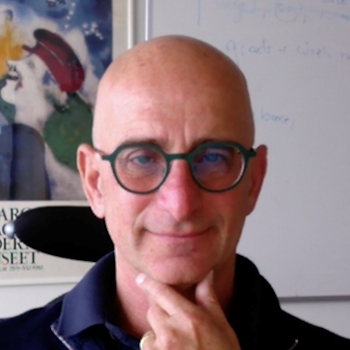
Professor Ariel Goobar, Stockholm University, Sweden

Professor Ariel Goobar, Stockholm University, SwedenAriel Goobar is the director of the Oskar Klein Centre for Cosmoparticle Physics in Stockholm and a member of the Swedish Royal Academy of Sciences. He started his scientific career as a PhD student in experimental particle physics, searching for the Higgs boson at CERN. In 1992, he changed field to observational cosmology, as he joined the supernova cosmology group led by Perlmutter in Berkeley, the SCP team that eventually discovered the accelerated expansion of the Universe. For that work he shared the Gruber prize and the Breakthrough prize in fundamental physics with the SCP team members. During the 1990’s, he also worked on the AMANDA neutrino telescope, the precursor of IceCube. In recent years, Goobar has been leading the search for gravitationally lensed supernovae with ground-based facilities, most notably at the Palomar Observatory. |
| 16:00-16:30 |
Contributed talks
Mass-sheet degeneracy in gravitational waves lensing and its implication in cosmology The strong lensing gravitational wave is a promising transient phenomenon that encompasses a wealth of physics. However, the long-wave nature of gravitational waves poses a significant challenge in identification of its host galaxy. In this talk, the author will introduce a multi-messenger method triggered by the wave optics effect of microlensing for 3G gravitational wave detectors. Specifically, the long-wave nature of gravitational waves allows microlenses, including stars and compact objects within lens galaxies, to produce diffraction or interference patterns in the waveforms. These patterns serve as distinct signatures for strong lensing events. Subsequently, with the help of Stage-4 survey telescope and JWST, one can pin down the host galaxy of the quadruple-image system within three observation years. |
| 16:30-17:00 |
Discussion
|
| 17:00-18:30 |
Flash talks and poster session
|
Chair

Dr Anupreeta More, Inter-University Centre for Astronomy and Astrophysics, India

Dr Anupreeta More, Inter-University Centre for Astronomy and Astrophysics, India
Anupreeta More is a scientist at Inter-University Centre for Astronomy and Astrophysics, Pune University, working on gravitational waves as part of the LIGO collaboration. She did her PhD at the Max Planck Institute for Radio Astronomy, Bonn. She was a postdoctoral fellow at Kavli Institute for Cosmological Physics, University of Chicago, and a JSPS fellow at Kavli Institute for the Physics and Mathematics of the Universe, University of Tokyo. She has worked on different aspects of gravitational lenses from optical imaging surveys. Her recent work focuses on prospects and detection of gravitational lensing of gravitational wave sources.
| 09:00-09:30 |
False positives: the gravitational wave perspective
For the first detection of a novel astrophysical phenomenon, scientific standards are particularly high. Especially in a multi-messenger context, there are also opportunity costs to follow-up observations on any detection claims. So, in searching for the still elusive lensed gravitational waves, care needs to be taken in controlling false positives (also known as false alarms). In particular, many methods for identifying strong lensing rely on some form of parameter similarity or waveform consistency, which under rapidly growing catalogue sizes exposes them to false alarms from coincident but unlensed events. And searches for waveform deformations in all lensing regimes are subject to degeneracies between lensing, intrinsic parameters, insufficiently modelled effects such as orbital eccentricity, or even deviations from General Relativity. In this talk, Dr Keitel will review these main sources of possible false positives in gravitational-wave lensing searches and the main approaches the community is pursuing to control them. The speaker will also highlight the flip-side of any hypothesis test: false negatives (or false dismissals), which we also need to control at the same time so as not to miss out on exciting science opportunities. 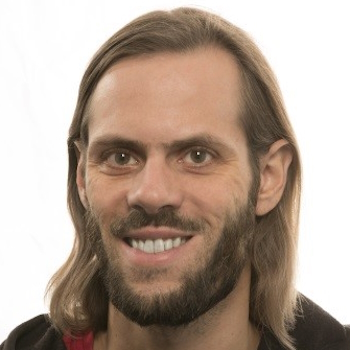
Dr David Keitel, University of the Balearic Islands, Spain

Dr David Keitel, University of the Balearic Islands, SpainDavid Keitel focuses his research on gravitational waves (GWs) from neutron stars and black holes. A LIGO Scientific Collaboration (LSC) member since 2011, his work covers large-scale data analysis and the modelling and interpretation of astrophysical GW sources. After studying in Germany (diploma from Bonn University in 2010 and doctorate in 2014 from Leibniz University Hannover), he has worked as a postdoc at AEI Hannover, the University of the Balearic Islands (UIB), Glasgow, and Portsmouth. Since 2020 he is a tenure-track faculty member at UIB. He has leading roles in various LSC activities, including in the first searches for binary neutron star merger remnants, gravitationally lensed GWs, and GWs from glitching pulsars, as well as co-chair of the CW working group (since 2022) and coordinator of public outreach science summaries. |
|---|---|
| 09:30-10:00 |
False positives: the electromagnetic perspective
Gravitational wave (GW) error regions are large, typically 10s to 1000s of square degrees. Within this area there will be a number of electromagnetic transient sources that are detected serendipitously and that may not necessarily be related to the GW. Understanding how the light from these false positives evolves with time is important to rapidly confirm or rule out their association with the GW trigger. In this talk, Dr Oates will discuss the process of searching for the electromagnetic counterpart of GW events, what they hope to find, what they find instead and how false positives are ruled out. The author will also discuss how false positives are themselves of interest, even though they are contaminants to the GW community. 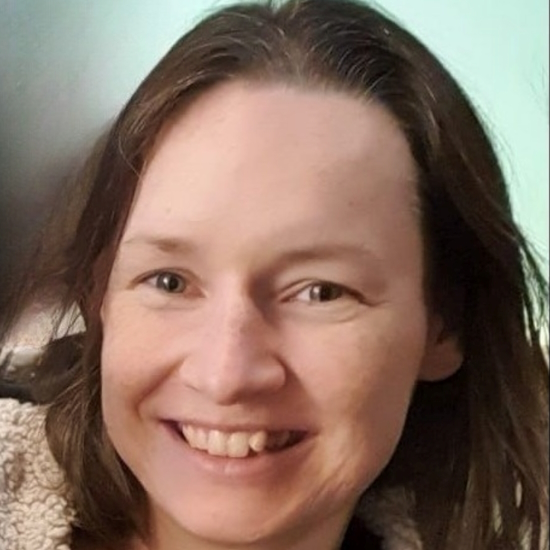
Dr Samantha Oates, Lancaster University, UK

Dr Samantha Oates, Lancaster University, UKSam is a lecturer at Lancaster University. She obtained her PhD in 2010 from MSSL-UCL. She went on to be a Juan de la Cierva Fellow at the IAA-CSIC in Granada, Spain; a Leverhulme Early Career Fellow at the University of Warwick and a Prize Postdoctoral Research Fellow in Gravitational Wave Astronomy at the University of Birmingham. She joined Lancaster in 2023. Her research interests cover a variety of explosive transients, including Gamma-ray bursts and the electromagnetic follow-up of gravitational wave sources. Sam is particularly interested in studying these transients in the optical/UV and is an active member of the Swift/UVOT team. |
| 10:00-10:30 |
Finding gravitational lenses with the Vera C. Rubin Observatory
The Vera C. Rubin Observatory's Legacy Survey of Space and Time (LSST) is scheduled to begin in 2025 and will run for 10 years. It is a time-domain survey that will cover 18,000 square degrees of the sky using 6 optical filters. This survey will contribute significantly to the field of strong lensing, increasing the number of known galaxy-scale lenses by two orders of magnitude. The Strong Lensing Science Collaboration and the Dark Energy Science Collaboration's Strong Lensing Topical Team are working together to prepare the community for this groundbreaking dataset. They are setting up discovery and analysis pipelines and organizing follow-up resources. Recently, two task forces have been formed to prepare the community with discovery pipelines for lenses with static and transient sources, respectively, before the real data arrives in early 2026. The task forces are working on developing a realistic simulation pipeline, called the SLSim (Strong Lensing Simulation) pipeline. This pipeline will provide training and test datasets for machine learning algorithms for lens searches and help characterize the selection function of the discovered samples with these algorithms. Anowar Shajib, University of Chicago, USA
Anowar Shajib, University of Chicago, USAAnowar Shajib is an NHFP Einstein Fellow at the University of Chicago. He completed his PhD in 2020 from UCLA. He primarily works with galaxy-galaxy strong lenses and strongly lensed quasar/supernova systems to measure cosmological parameters such as the Hubble constant, and to study properties of elliptical galaxies at the intermediate redshift (z∼0.5). He is currently the co-convener of the Strong Lensing Topical Team within the Rubin Observatory LSST’s Dark Energy Science Collaboration. He is also a co-PI of the STRIDES collaboration that aims to discover strongly lensed quasars from the Dark Energy Survey and other large surveys. |
| 10:30-11:00 |
Break
|
| 11:00-11:30 |
Machine learning methods for multi-messenger gravitational lensing
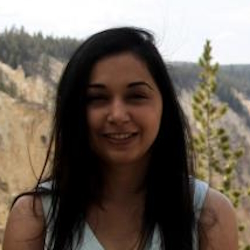
Dr Niharika Sravan, Drexel University, USA

Dr Niharika Sravan, Drexel University, USADr Niharika Sravan was awarded a PhD in Physics and Astronomy and a graduate certificate in Integrated Data Science from Northwestern University in 2018. Dr Sravan was a postdoctoral researcher at Purdue University and California Institute of Technology before she moved to Drexel as an Assistant Professor in Spring 2023. Professor Sravan is an expert in the use of machine learning methods for solving problems in astronomy. She has pioneered the development of the autonomous agents for strategizing real-time observations of astronomical transients. These systems enable us to constrain the physics of supernovae and discover elusive electromagnetic counterparts to gravitational wave sources. Her efforts leverage advances in reinforcement learning algorithms, specialized hardware for deep learning including TPUs and FPGAs, and data from astronomical surveys such as the Rubin Observatory and NASA’s current and future space facilities. Sravan is a member of the Zwicky Transient Facility collaboration. |
| 11:30-12:00 |
Contributed talks
Finding black holes: an unconventional multi-messenger route
|
| 12:00-12:30 |
Discussion
|
Chair
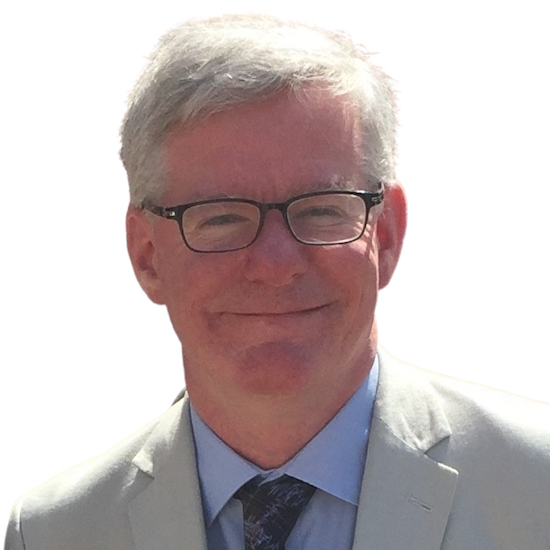
Professor Martin Hendry, University of Glasgow, UK

Professor Martin Hendry, University of Glasgow, UK
Martin Hendry is Professor of Gravitational Astrophysics and Cosmology at the University of Glasgow. His principal research interests are in gravitational lensing and gravitational-wave cosmology. He is a senior member of the LIGO Scientific Collaboration (LSC) and is currently a member of the LSC Management Team, chairing its Communications and Education Division. He also co-chairs the Galaxy Catalogs workstream of the LIGO Virgo KAGRA Cosmology Working Group. Martin is a Fellow of the Institute of Physics and the Royal Society of Edinburgh.
| 13:30-14:00 |
Lensing in gamma-ray bursts
Lensed gamma-ray bursts offer several key advantages over other lensed sources. In particular, their short duration enables precision timing of the lens to a degree not possible with quasars or even supernovae, and their short duration can plausibly probe comparably short delay times. There are now samples of ~10,000 GRBs which can be searched for lensing signals. However, most of these are poorly localised on the sky, so the actual lens cannot be identified. The search is then for identical GRBs with overlapping sky localisations but offsets in time. Several plausible examples have been found, but none are entirely compelling. In this talk, the author will review past searches for lensed GRBs and consider how to optimise future searches to improve the chances of robust discoveries. 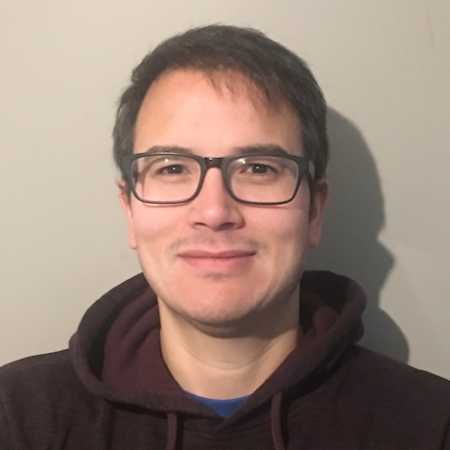
Professor Andrew Levan, Radboud University, The Netherlands

Professor Andrew Levan, Radboud University, The NetherlandsAndrew Levan is an observational astronomer interested in the many ways stars end their lives through explosions, implosions and disruptions. He has worked extensively on studies of gamma-ray bursts, supernovae, tidal disruption events and the electromagnetic counterparts of gravitational wave sources. Highlights from his work include the identification of the most distant gamma-ray bursts in the early Universe, the discovery of new populations of transients such as relativistic tidal disruption events and ultra-long duration gamma-ray bursts, the discovery of kilonovae powered by the production of heavy elements, and, most recently, leading the first campaigns of observations of gamma-ray bursts with the James Webb Space Telescope. |
|---|---|
| 14:00-14:30 |
FRBs and the radio perspective on multi-messenger gravitational lensing
Fast Radio Bursts (FRBs) are enigmatic millisecond-duration radio transients that have been sparking curiosity in the scientific community since their recent discovery in 2007. The advent of numerous facilities conducting dedicated FRB searches has dramatically revolutionised the field: hundreds of new bursts have been detected, and some are now known to repeat. In this talk, Inés Pastor-Marazuela will discuss the prospects for detecting gravitationally lensed FRBs with current and future FRB facilities. The author will outline the requirements for identifying a lensed FRB, taking into account their propagation effects and the importance of voltage data. Next, the author will explore the different lens masses that could be probed with FRBs throughout an FRB survey, from stellar masses to individual galaxies. She will distinguish the potential for discovery with repeating and non-repeating FRBs, and finally, she will highlight the unique cosmological applications of gravitationally lensed FRBs. 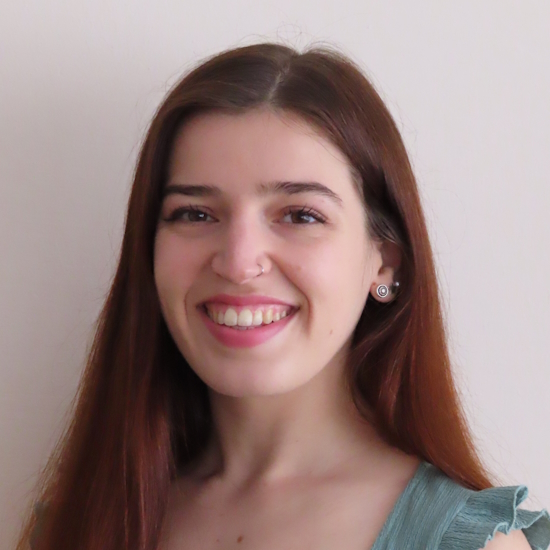
Inés Pastor-Marazuela, University of Manchester, UK

Inés Pastor-Marazuela, University of Manchester, UKInés is a Spanish researcher from Segovia. She got her bachelor’s and master’s degree in astrophysics at IRAP in Toulouse, France, where she worked on looking for X-ray transients in XMM-Newton data with Natalie Webb. She moved to the University of Amsterdam, the Netherlands, where she obtained her PhD in astrophysics in November 2022, titled 'Exploring the link between Neutron Stars and Fast Radio Bursts', supervised by Joeri van Leeuwen. In her research, she used data from Apertif and LOFAR to look for Fast Radio Bursts (FRBs) and try to understand their origin. She is now a Rubicon Research Fellow at the University of Manchester, where she works with Ben Stappers and keeps looking for FRBs using the MeerKAT radio telescope, in South Africa. |
| 14:30-15:00 |
Contributed talks
On the feasibility of primordial black hole dark matter abundance constraints using lensing parallax of Gamma Ray Bursts
|
| 15:00-15:30 |
Break
|
| 15:30-16:00 |
Synergies with the Vera C. Rubin Observatory
With an unprecedented combination of depth and large field of view, Rubin Observatory will dramatically increase the potential for serendipitous detection of MMA counterparts while the implementation of a Target of Opportunity program will enable targeted searches for counterparts of MMA triggers. The speaker will review the Rubin Observatory's observational capabilities and current plans for contributions to MMA astronomy. 
Dr Federica Bianco, University of Delaware, USA

Dr Federica Bianco, University of Delaware, USAFederica Bianco is an Associate Professor at the University of Delaware in the Departments of Physics and Astronomy and in the Biden School of Public Policy and Administration and a Resident Faculty in the University of Delaware Data Science Institute. She is Rubin Observatory Construction's Deputy Project Scientist and the chair of the Rubin LSST Transients and Variable Stars Science Collaboration. She works on data-driven solutions to problems that span from the nature of explosions in the sky to urban sustainability. She studies lightcurves, time series of light, in astronomy to understand stellar evolution and cosmology, and in the urban environment at the Urban Observatory, where the study of urban lightcurves enables sociological, ecologic, and economic inference. She is a TED 2019 fellow. |
| 16:00-17:00 |
Panel discussion

Professor Nial Tanvir, University of Leicester, UK

Professor Nial Tanvir, University of Leicester, UKNial Tanvir is a professor in the Department of Physics and Astronomy at the University of Leicester in the United Kingdom. His main areas of research are gamma-ray bursts (GRBs), the structure and evolution of galaxies, and the extragalactic distance scale. Dr Tanvir headed the team that discovered the infrared afterglow of GRB 090423, proving it to be the most distant object identified in the universe up to that time, and in 2013 found the first evidence for a so-called “kilonova” accompanying a short-duration gamma-ray burst. The latter breakthrough paved the way for the searches for electromagnetic radiation accompanying gravitational wave sources, which came to fruition with the discovery of the binary neutron star merger GW170817. In 2002 he was co-recipient of the European Union Descartes Prize for research, and in 2019 was awarded the Royal Astronomical Society’s Herschel Medal. 
Professor Martin Hendry, University of Glasgow, UK

Professor Martin Hendry, University of Glasgow, UKMartin Hendry is Professor of Gravitational Astrophysics and Cosmology at the University of Glasgow. His principal research interests are in gravitational lensing and gravitational-wave cosmology. He is a senior member of the LIGO Scientific Collaboration (LSC) and is currently a member of the LSC Management Team, chairing its Communications and Education Division. He also co-chairs the Galaxy Catalogs workstream of the LIGO Virgo KAGRA Cosmology Working Group. Martin is a Fellow of the Institute of Physics and the Royal Society of Edinburgh. 
Dr Anupreeta More, Inter-University Centre for Astronomy and Astrophysics, India

Dr Anupreeta More, Inter-University Centre for Astronomy and Astrophysics, IndiaAnupreeta More is a scientist at Inter-University Centre for Astronomy and Astrophysics, Pune University, working on gravitational waves as part of the LIGO collaboration. She did her PhD at the Max Planck Institute for Radio Astronomy, Bonn. She was a postdoctoral fellow at Kavli Institute for Cosmological Physics, University of Chicago, and a JSPS fellow at Kavli Institute for the Physics and Mathematics of the Universe, University of Tokyo. She has worked on different aspects of gravitational lenses from optical imaging surveys. Her recent work focuses on prospects and detection of gravitational lensing of gravitational wave sources. 
Professor Tessa Baker, University of Portsmouth, UK

Professor Tessa Baker, University of Portsmouth, UKTessa Baker is a cosmologist and gravitational wave astronomer. Her research centres on testing the laws of gravity that govern the universe on the very largest scales. She is interested in both new theoretical ideas about dark energy, and testing them with the latest electromagnetic and gravitational wave observations. Tessa completed her training at Oxford, before moving to Queen Mary University of London (via a brief stop in Philadelphia) for a Royal Society University Research Fellowship. In 2023 she moved to join the ICG at Portsmouth. She is strongly involved in the LIGO-Virgo-KAGRA collaboration, the LISA consortium and the Vera Rubin Observatory, leading various groups focusing on tests of fundamental physics. When not working, she still likes to test gravity by hiking up large things. |
